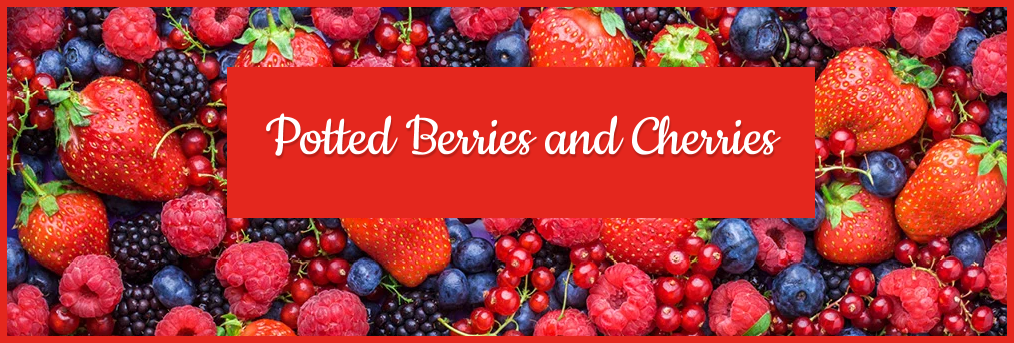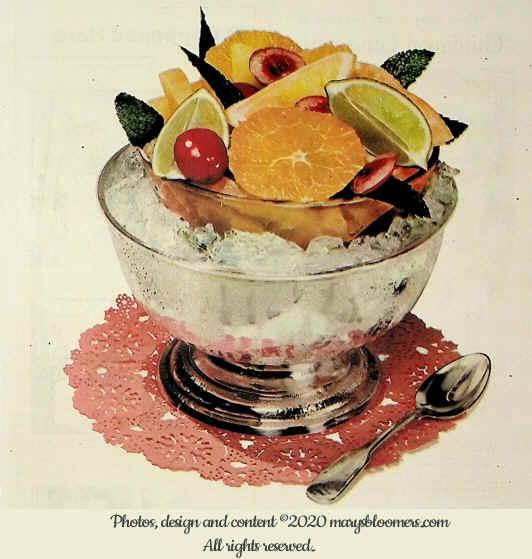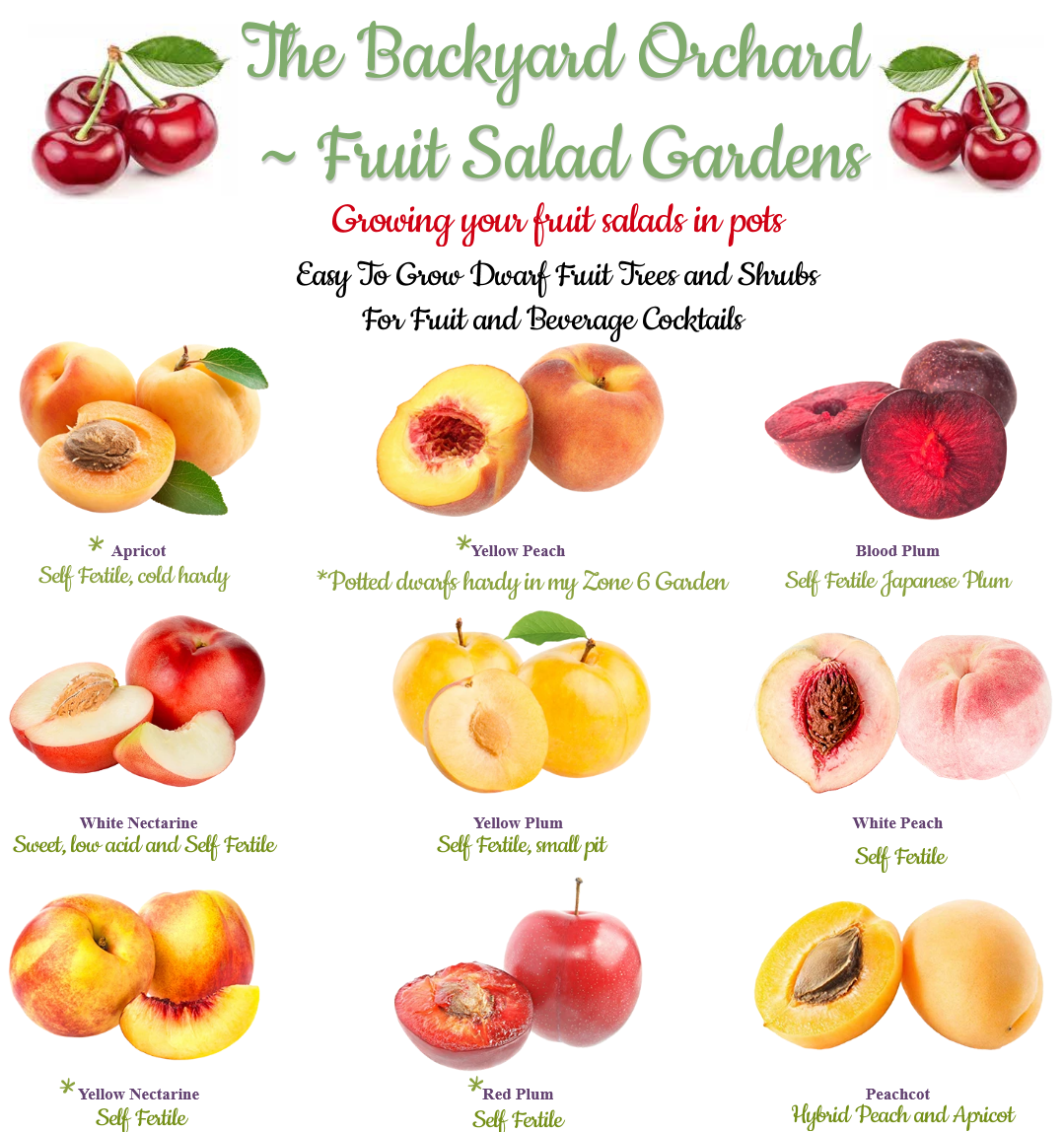 |
|
Design a backyard orchard and Fruit Salad Garden by planting dwarf fruit shrubs and trees in pots. This not only creates a moveable feast, but it makes it very easy for the small-space and urban gardener to grow an orchard full of full size fruits in minimal space. It's also a good companion to a Cocktail Garden, where fruits and herbs are plucked fresh and popped into your beverages. The Cocktail Garden focuses on the herbs, leaves, flowers and veggies that are most popular in cocktails. The two garden themes can be combined. I grow a lot of fruit and berries in pots and big, raised and elevated garden beds. It's so easy to keep rabbits and other garden fiends out of my crops. It also eliminates all the ground level weeds you get when you plant in-ground. You can cram dozens of fruit plants and dwarf trees into a small space. And it's quite prolific. You get to use all of what used to be dead space, as you can in square foot gardening, and grow vertically, as well. I find them sturdy, and plants are easy to care for, fertilize, prune and harvest. Raised bed and big pot gardening is a blessing for those who are not able to bend or kneel in the garden for long. It a real help to the elderly, disabled and those with back problems. Space between planters and pots can be made, and cedar boardwalks/pathways laid right on top of the ground to accommodate wheelchairs. The space beneath and in-between "rows" of pots and planters, and the area below the planters on legs, can be planted with low growing herbs and other edibles as a ground cover. This method is the best for intensive gardening in a small space. I have small trellises in the raised beds to support dwarf fruiting vines and flowers. I can grow strawberries and have a dwarf flowering plant in the center to add visual height and attract the pollinators. I grow Bee Balm and Milkweed in containers throughout the garden for a high pollination rate and big, juicy berries and fruits. I am replacing all of my wood and vinyl standing and ground level beds with these heavy duty resin raised bed beauties. I own 8 so far, planted with 4 varieties of strawberries, a bed of milkweed for the Monarch butterflies(keeps the plants from spreading), and for tumbling cherry tomatoes and beds of buttercrunch and mesclun leafy crops for fall. These, coupled with other standing beds and big lightweight pots means No More Bending and Digging for me. These planters have a neat drainage plug on the side and a water gauge - these are not self-watering pots. The gauge tells you when there's too much water and time to drain. I keep my plug out all the time, unless we have a heatwave happening, as we do this summer. This garden bed is made by the Keter Company, and they have several other types of Easy-Grow planters for the entire garden. Perfect plants for these raised beds - Any dwarf fruit that doesn't vine. You can poke in trellises if you want vines to grow. I have a dwarf blackberry variety called "Sweetie Pie". It's staked inside one of these planters. For those of us who are tired of putting together some of these planters that take an hour to set up and take 2 hands, all you do is snap the legs into slots and screw them in. It now takes me only 10 minutes all by myself to have these ready to plant. They are quite deep, so just about any dwarf fruit plant with long roots will be happy in it. They're built to last and are very attractive. I get a couple each year when they're on sale when my budget allows. They are well worth the investment. They hold about 32 gallons of soil and are weatherproof. |
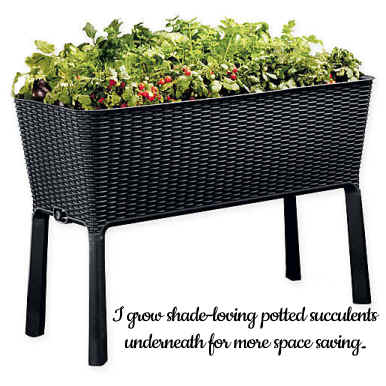 |
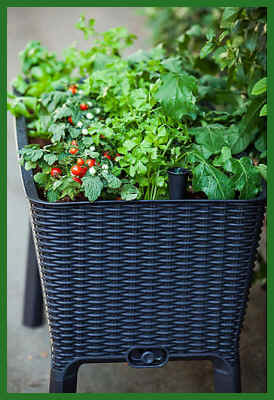 |
|
Strawberries, dwarf blackberries, raspberries, elderberries, blueberries and dwarf trees can all be grown in raised beds and big planters. Get the variety that's perennial in your region, and they will return in spring. I also use large black fabric grow bags. My tomatoes grew very well in them, and the attached side handles made moving 10 gallons of soil and plant very easy. You don't think you might need to move your vegetable garden, but I had to rescue plants from a storm with high winds that knocked plants over, and move them to a sheltered area. I could never have done that with in-ground plants. Roots are air-pruned in these bags. The little, hairlike roots start to grow out of the sides of the bag, and the wind and air cut them off. Pretty neat pruning that I don't have to be bothered with. These bags come in all sizes, even full garden bed size, and pots for aquatic plants. You can keep perennials in them, or empty and store the bags for next season's crops. Citrus fruits grow very well indoors. Find a dwarf variety and pot it up. Mixed Fruit Salads From A Few Dwarf Trees There are new dwarf and semi-dwarf fruit trees bred especially for fruit combinations through grafting. Some grafts create 6- 7 types of fruits growing on one tree.
The trees are multi-grafted with different fruits from the same family together on the one tree. All the fruits retain their own flavor, appearance and ripening time characteristics. I haven't grown any, but it sounds like a great space saver and a plan for a backyard orchard that urban and space-limited hobby farmers would love. Shown
below are trees that are just a few varieties of multi-grafted
fruit trees These trees are available on ebay and offered by online plant nurseries. Many are dwarf, and many are cold hardy and happy to be growing in a big pot. Those that are not cold hardy (like my lemons, limes and some of my figs in zone 6), sleep it off all winter in their dormant state, stored in my basement in their pots. Lemons and limes don't go dormant, and they bloom as beautiful houseplants all winter. They might produce some lemons while they're waiting. I pop them all back outside when the dormant trees wake up in spring. It goes without saying that if you can grow dwarf fig trees, do it! That sweet, rich fruit makes amazing desserts and fruit cups, as well as adding elegance to your presentation by just laying them on a pretty plate with dates. I grow hardy and non-hardy dwarf, self-pollinating varieties in pots. Some come inside for winter dormancy. If you have enough figs, you can preserve them as jams dressings, or dry them to eat anytime. I make a fig and poppyseed pastry filling when i can restrain myself from eating all the figs when i pick them. |
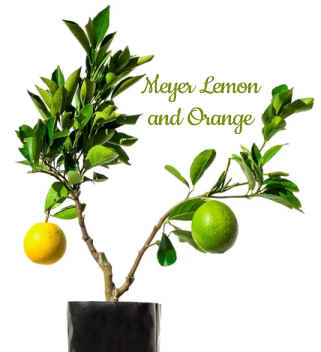 |
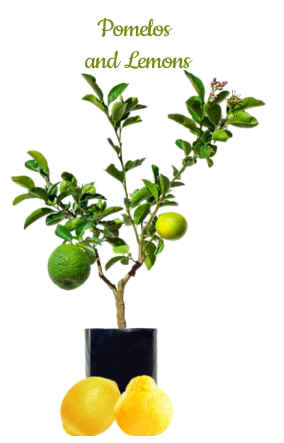 |
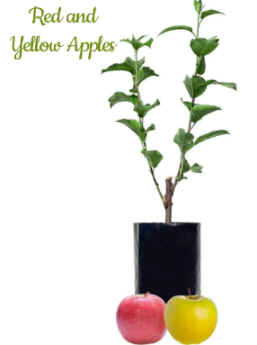 |
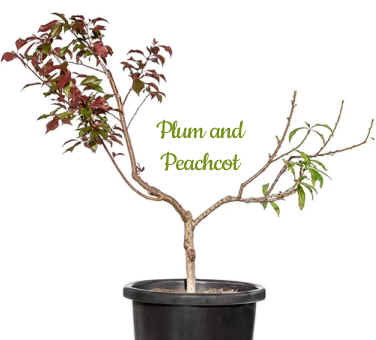 |
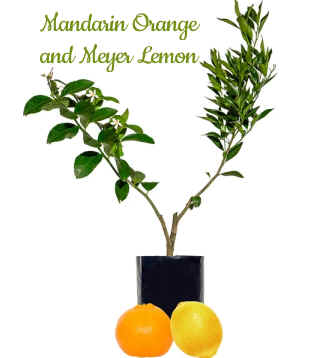 |
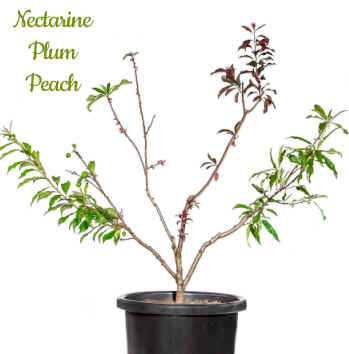 |
|
|
|
Determine which varieties and fruits are cold hardy in your region by checking plant tags for hardiness zones, then checking that info the USDA Hardiness Zone Map for your region, to be absolutely sure. Store tags and online nursery information may not be accurate. Strawberries
Cherries.... because everything needs a cherry on top. Blueberries - You usually need to plant 2 varieties for pollinating crops, but there are varieties that are self-pollinating, like "Top Hat" and "Sunshine Blue". "Peach Sorbet", "Pink Icing" and "Jelly Bean" are pretty varieties in a compact size. Blackberries and raspberries - Just about any dwarf or small variety grows well in pots. Thornless varieties are especially suited for small spaces, raised beds and patios. Suggestions:
"Baby Cakes", and "Sweetie Pie"
Blackberries. If
you have room, espalier or grow table grapes on arches or trellises. |
Article: Mary Hyland 2020
Image Credits
Mary's Garden
vintage art- eyecandee.com
Fruit Salad Trees .com
planters: amazon.com
Quick Links |
